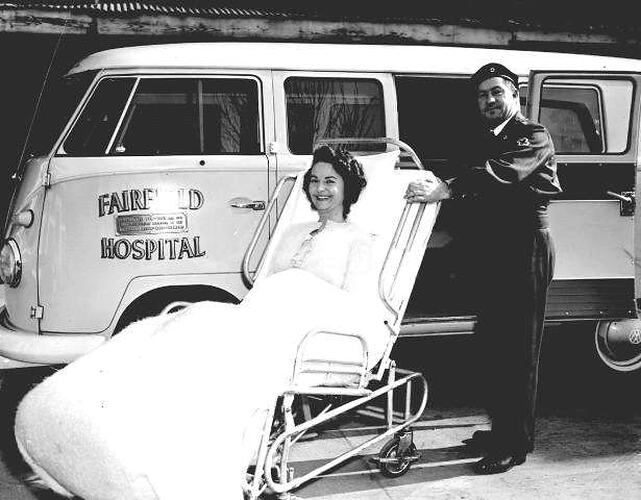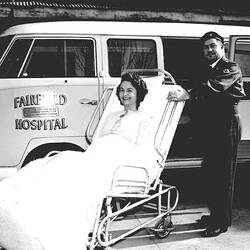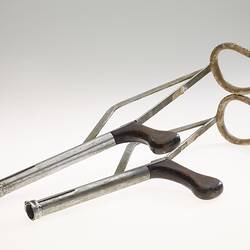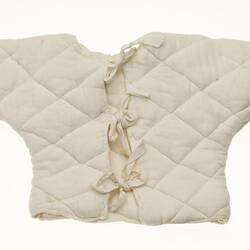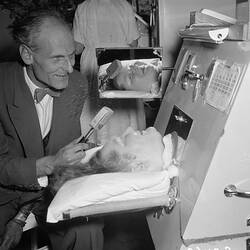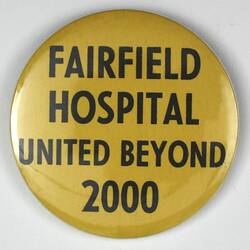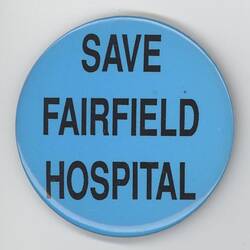Fairfield Infectious Diseases Hospital in Victoria, Australia, began life in 1904 as a fever hospital, under the original name Queens Memorial Infectious Diseases Hospital. It treated Victorian patients for typhoid, diphtheria, cholera, small pox and the epidemics of polio and scarlet fever. It also treated victims of the Spanish Influenza pandemic. It later became one of the world's foremost centres for the research and treatment of infectious diseases, especially HIV/AIDS. Fairfield Hospital was closed by the Kennett Liberal Government in 1996 amid some public controversy and community protest, with the functions it provided relocated to other Melbourne Hospitals.
Fairfield Hospital gained international recognition for its expertise in research and public health. Dedication and perfecting of skills led to what became widely known as the "Fairfield culture of care" which involved medical, nursing, allied health and pastoral care. It was this multidisciplinary approach along with active research which led to its international renown. The creation of a virology laboratory in the 1950s, later to become the Macfarlane Burnett Institute, established the hospital's reputation for research.
The collection acquired by Museum Victoria in 2008 comprises over 200 objects covering the entire period of the hospital's history and represents the areas of nursing, medicine, administration, pharmaceuticals, occupational therapy, infectious disease care and control, disability and mobility aids. The collection was originally developed by Dr Bryan Speed and Barbara Rossall-Wynne. Highlights of the collection are:
- Shredder used to shred hay for making mattresses as mattresses were burnt after being used by a patient with infectious disease;
- Pedal-powered French jigsaw used by patients with polio as a form of occupational therapy;
- Doll collection: approximately 25 dolls and their accessories made by nurses as part of their training at Fairfield - each doll represents one of the nurse archetypes, these are accompanied by an illustration outlining the archetypes eg sister of charity, Benedictine monk, Florence Nightingale, priestess, ambulance nurse;
- Polio disability aids - callipers and splints for toddlers, children and adults;
- Pneumonia jackets - used for babies with pneumonia;
- Fumigation bags - used for the fumigation and sterilisation of materials in contact with infectious agents;
- Blood pump for direct blood transfusion;
- Nursing uniforms - covering the period 1910-1980.
References:
Anderson, W.K., Fever Hospital: A History of Fairfield Infectious Diseases Hospital, Melbourne University Press, 2002.
Wikipedia, Fairfield Infectious Diseases Hospital, http://en.wikipedia.org/wiki/Fairfield_Infectious_Diseases_Hospital, viewed 10/05/2010.
Biography of Patrick Shaw, East Melbourne Historical Society, http://emhs.org.au/person/shaw/patrick, viewed 22/7/2016.
More Information
-
Keywords
Acquired Immune Deficiency Syndrome (AIDS), Clothing, Disabilities, Healthcare & Medicine, Hospitals, Infectious Diseases, Medical Institutions, Medical Research, Nurses, Nursing, Polio (Poliomyelitis), Sexually Transmitted Diseases (STDs), Uniforms, Medicine and health
-
Authors
-
Article types
